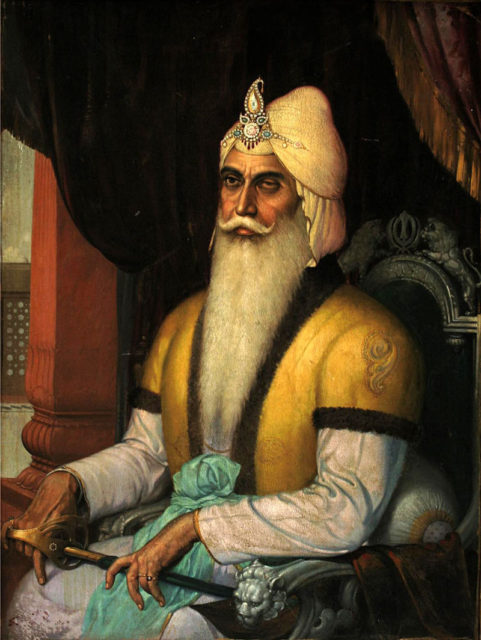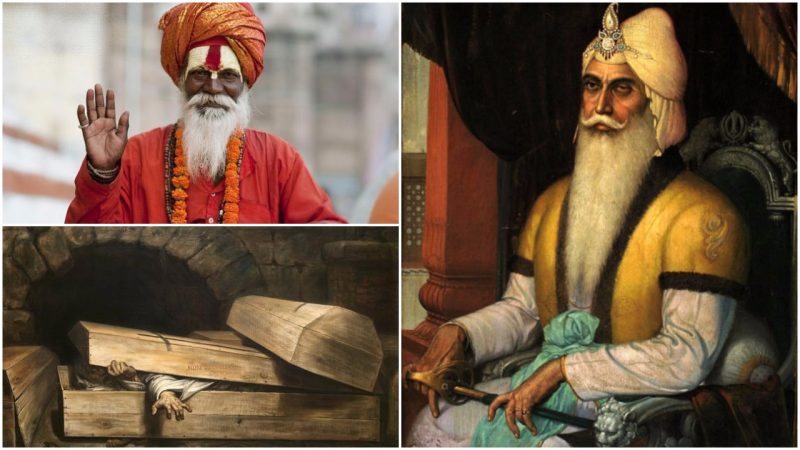Ascetics, known as “sadhus” are considered holy people, and are esteemed throughout the Hindu culture. They are obliged to renounce all material possessions and dedicate their lives to the pursuit of spiritual liberation, which they seek to achieve through meditation and contemplation of Brahman.
Many Hindu legends speak of sadhus who achieved heightened spiritual states in which they could accomplish impossible things.

Sadhu Haridas was a yogi and a fakir of 19th century India and was renowned for his apparent power to completely control his body using only his mind and the primal energies of kundalini. In 1837, Haridas was supposedly voluntarily buried alive and survived without food or water for forty days.
The whole ritual allegedly took place at the court of Ranjit Singh, the founder of the Sikh empire and the Maharaja of the Punjab.
Maharaja himself was present at the time of the burial, as well as his whole court and a regiment of British and French doctors. Haridas sat inside of a large wooden case and was covered with a thick piece of cloth.
The case was then sealed and lowered into a specially constructed brick vault. Earth was piled upon the case, and a regiment of Maharaja’s guards was appointed to constantly guard the site for forty days.

Forty days later Haridas was allegedly unearthed in the presence of the Maharaja and the doctors who had previously been present at his burial. His apparently lifeless body was washed with hot water and massaged, and he soon recovered.
This allegedly successful ritual received significant attention in 1911 when the memoirs of Claude Wade were published in England. Wade was a resident at the Maharaja’s court who wrote a detailed account of the ritual. He wholeheartedly believed that Haridas indeed survived forty days without food or water through the power of his meditation.
“From the time of the box being opened to the recovery of the voice, not more than half an hour could have elapsed, and in the next half an hour, the Fakir talked with myself and those about him freely, though feebly, like a sick person. Then we left him, convinced that there had been no fraud or collusion in the exhibition we had witnessed”.

Wade’s memoir is one of the very few historical sources of Haridas’ ritual, and it will never be known whether he pulled an elaborate hoax or really did manage to survive in a grave for forty days.
Read another story from us: The Aghori: Hindu ascetics who seek purity in the darkest places
Contemporary scientists and historians would argue that surviving forty days without food and water is impossible in any state of mind.
